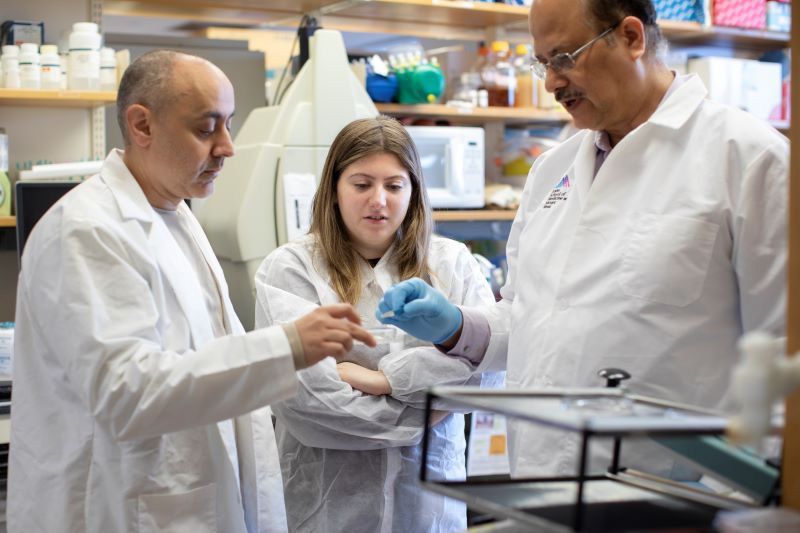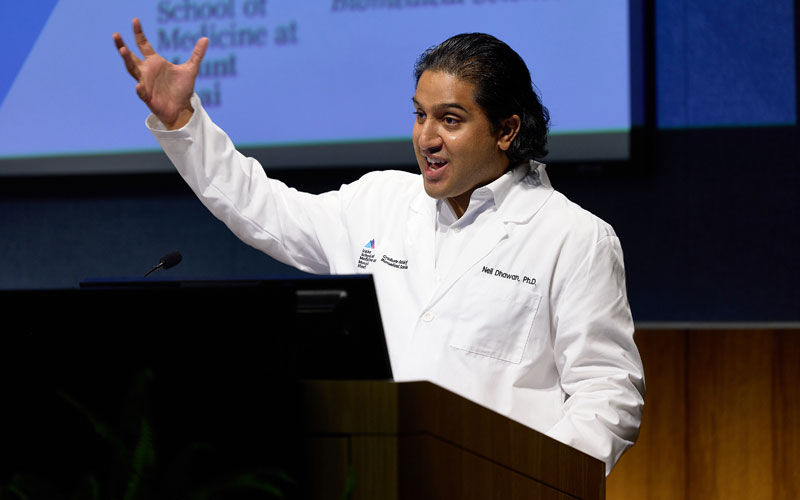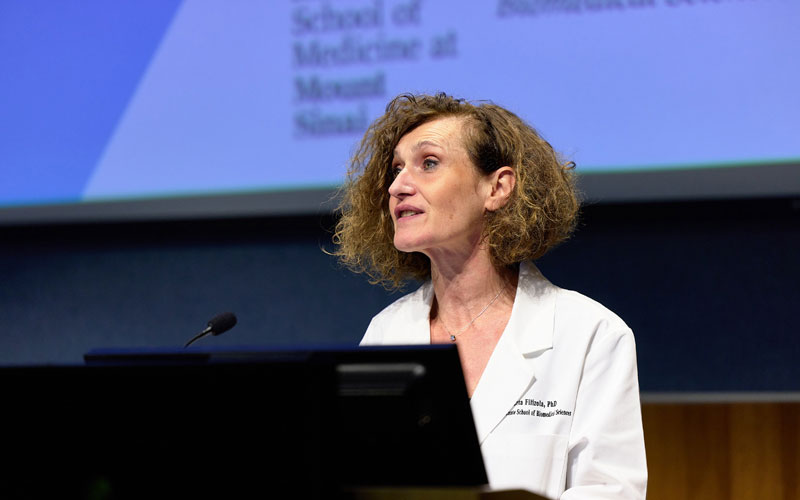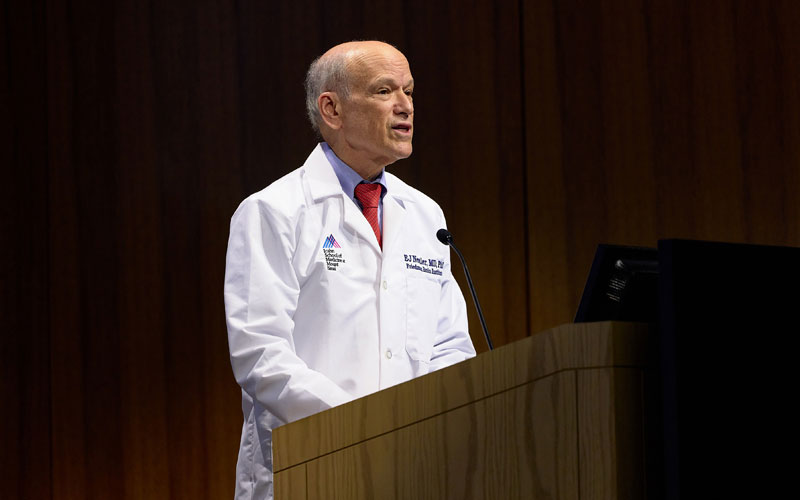Match Day 2025: This Is Where It Begins
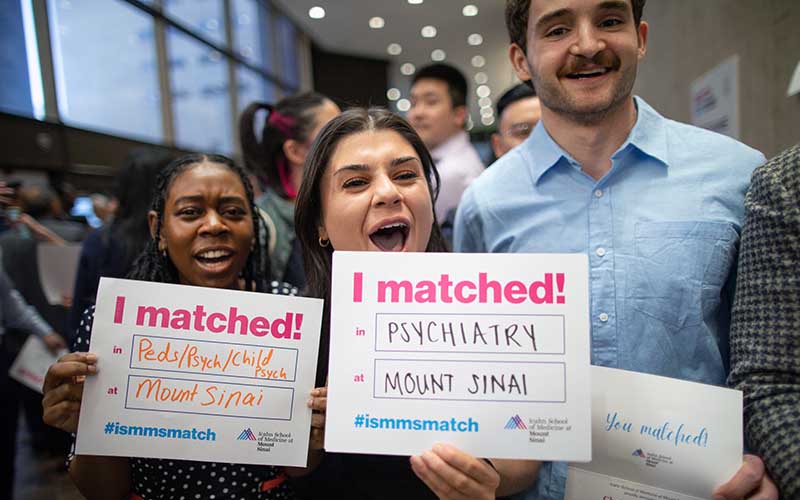
With their medical school journey nearly over, students gathered at the Annenberg Building lobby on Friday, March 21, for an important reason: Match Day. It is when fourth-year students learn where they will complete their residency training. For the Icahn School of Medicine at Mount Sinai’s Class of 2025, 118 students matched to 27 different specialties across the country.
“These are excellent results. Our students are going to some of the best residency programs in the nation,” said David C. Thomas, MD, MHPE, Dean for Medical Education of the Icahn School of Medicine at Mount Sinai.
Graduating students are starting their residencies at leading institutions, including The Johns Hopkins Hospital, Massachusetts General and Brigham and Women’s Hospital, and the Hospital of the University of Pennsylvania, to name a few. Of the Class of 2025, 45 will continue their training within the Mount Sinai Health System.
Embarking on a residency program is where a student’s years of classroom knowledge is put into practice, said Dr. Thomas.
“This is it,” he said. “This is where it begins. For our students, they’ve worked so hard to get to this stage and now they’re ready to start the next phase of their career.”
Icahn School of Medicine Class of 2025 Top Residency Matches by Specialty
| Specialty | Number of Matches |
| Internal Medicine | 30 |
| Anesthesiology | 14 |
| Psychiatry | 10 |
| OB-GYN | 7 |
Click to read more as three MD seniors talk about their calling to enter the medical field, and their excitement on getting to the next stage.
Sungjae Park
Matched to: Preliminary internship at Flushing Hospital Medical Center in New York City, then Diagnostic Radiology residency at Montefiore Einstein
Why did you choose to enter medicine?
I was a U.S. Army Psych Medic—a behavioral health specialist—and a registered nurse. While I loved helping my patients in those roles, I always felt like I wanted to learn more so that I can do more for my patients. That’s why I chose to become a physician.
As a medic, I played an active role in patient care, but I often felt limited by my medical knowledge. I wanted to do more—to take full responsibility for my future patients by being able to assess, diagnose, and treat them. That desire for deeper understanding in medicine and science drove me to pursue further education and training.
What’s been one of the hardest moments for you at medical school, and how did you overcome it?
Balancing studying, volunteering, research, socializing, and clinical rotations simultaneously was challenging throughout medical school. I overcame it by recognizing my limits and just focused on and prioritized what I can do each day.
Volunteering was a meaningful activity for me. I served as the New York/New Jersey Chapter President of the Korean American Medical Student Association, where I organized volunteer events supporting local immigrant communities. Our team assisted physicians at free health fairs in Flushing, New York, and Fort Lee, New Jersey, providing health screenings and counseling to uninsured local residents.
Why were you excited to remain in New York and match to a New York institution?
Although I’m originally from South Korea, I attended Hunter College and the Icahn School of Medicine at Mount Sinai, and I’ve been living in New York City for the past eight years. Over time, I’ve made New York my second home, building strong relationships with friends and mentors who have supported me throughout my medical journey. I hope to stay connected to this community and give back by mentoring and support to the next generation of physicians and medical students, just as my mentors did for me.
Why did you choose diagnostic radiology as your next step?
I didn’t know much about diagnostic radiology during most of medical school. But while I was visiting my parents at home, my mother suddenly developed sharp left-sided chest pain that radiated to her shoulder and jaw. We all thought she was having a heart attack. We rushed her to the emergency department. In the ED, the radiologist there quickly identified the true cause: a clavicle fracture. I was fascinated by how, even with limited face-to-face interaction with patients, radiologists play a critical role in rapidly diagnosing conditions and making a significant impact on patient care.
Horacio Romero Castillo
Matched to: Otolaryngology at Mount Sinai
Why did you choose to enter medicine?
As a former first-grade teacher, I found that medicine offered a career to continue growing as a lifelong learner and educator and the privilege to make an impact on the lives of others. I will always be a teacher at heart, and as a physician I have the opportunity to continue teaching and learning from my patients and colleagues.
Changing careers from teaching to medicine allowed me to pursue research opportunities. It was an avenue to help create knowledge, in addition to teaching and learning it, and that was what ultimately inspired me to make the switch.
What’s been one of the hardest moments for you at medical school, and how did you overcome it?
Balancing time between medical school, research, and family was a big learning curve for me, but luckily, with the combined support of my husband, friends, and family, I gained better time and project management skills to prioritize my learning and loved ones.
What are you looking forward to in your otolaryngology residency?
Mount Sinai was my top choice. It has opened up many doors for me throughout the years. I started as a volunteer premed student shadowing patients in the World Trade Center Health Program, then worked as a full-time clinical research coordinator before starting medical school here. It is an honor to continue my career at Mount Sinai as an otolaryngology resident—building on the experiences I’ve had and I’m excited to continue working with the mentors, patients, and research infrastructure available here.
Catherine Wu
Matched to: Anesthesiology at Mount Sinai
Why did you choose to enter medicine?
I chose to enter medicine because I love caring for others. That, combined with my love for physiology and working with my hands, anesthesiology seemed like the perfect specialty. Physiology is the study of how the human body works, which I find so fascinating. As an anesthesiologist, I get to apply these concepts in the operating room as I take care of patients.
What’s been one of the hardest moments for you at medical school, and how did you overcome it?
One of the hardest moments during medical school was when Hurricane Beryl hit Houston while I was home to take Step 2 of the United States Medical Licensing Examination, a nine-hour-long exam. We lost power and internet for the five days before my exam, which made studying very challenging. I ended up doing lots of reading of my first aid textbook in the candlelight. After all that, my test ended up getting canceled, but I was able to reschedule it and take it back in New York.
What are you looking forward to in your anesthesiology residency?
I’m excited to be matched at Mount Sinai—it was my first choice. The people in the department of anesthesiology at Mount Sinai are absolutely wonderful, and the training is phenomenal. Many of my friends are also staying at Mount Sinai for residency in both anesthesia and other fields—I can’t wait to be co-residents together!

